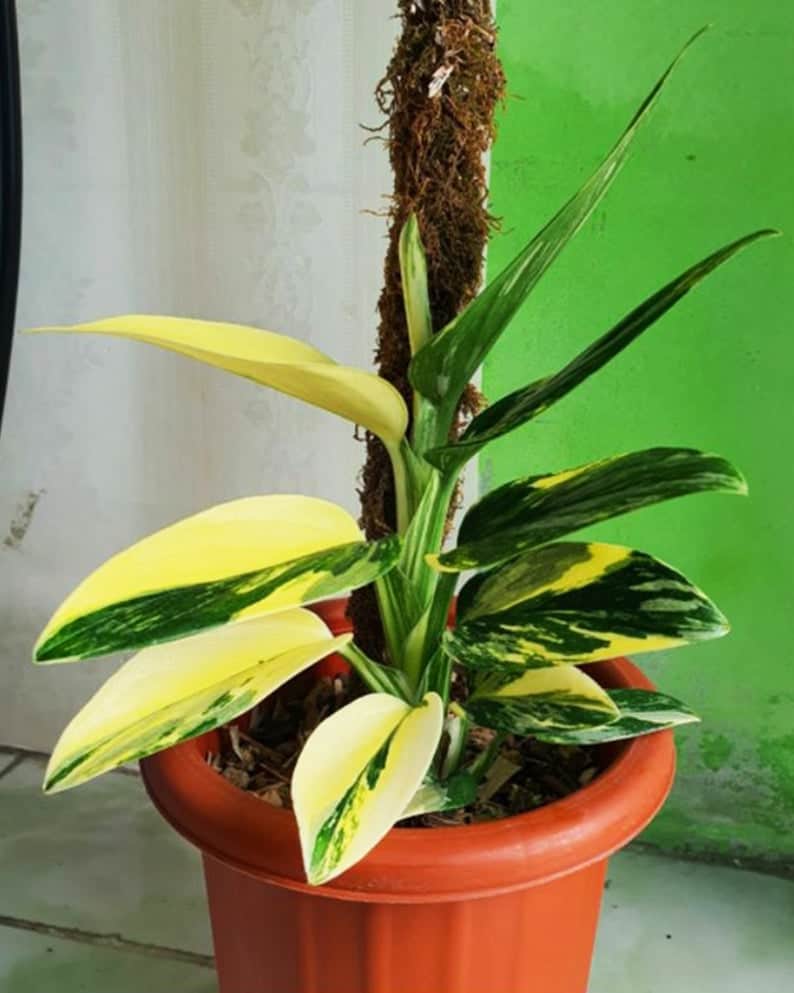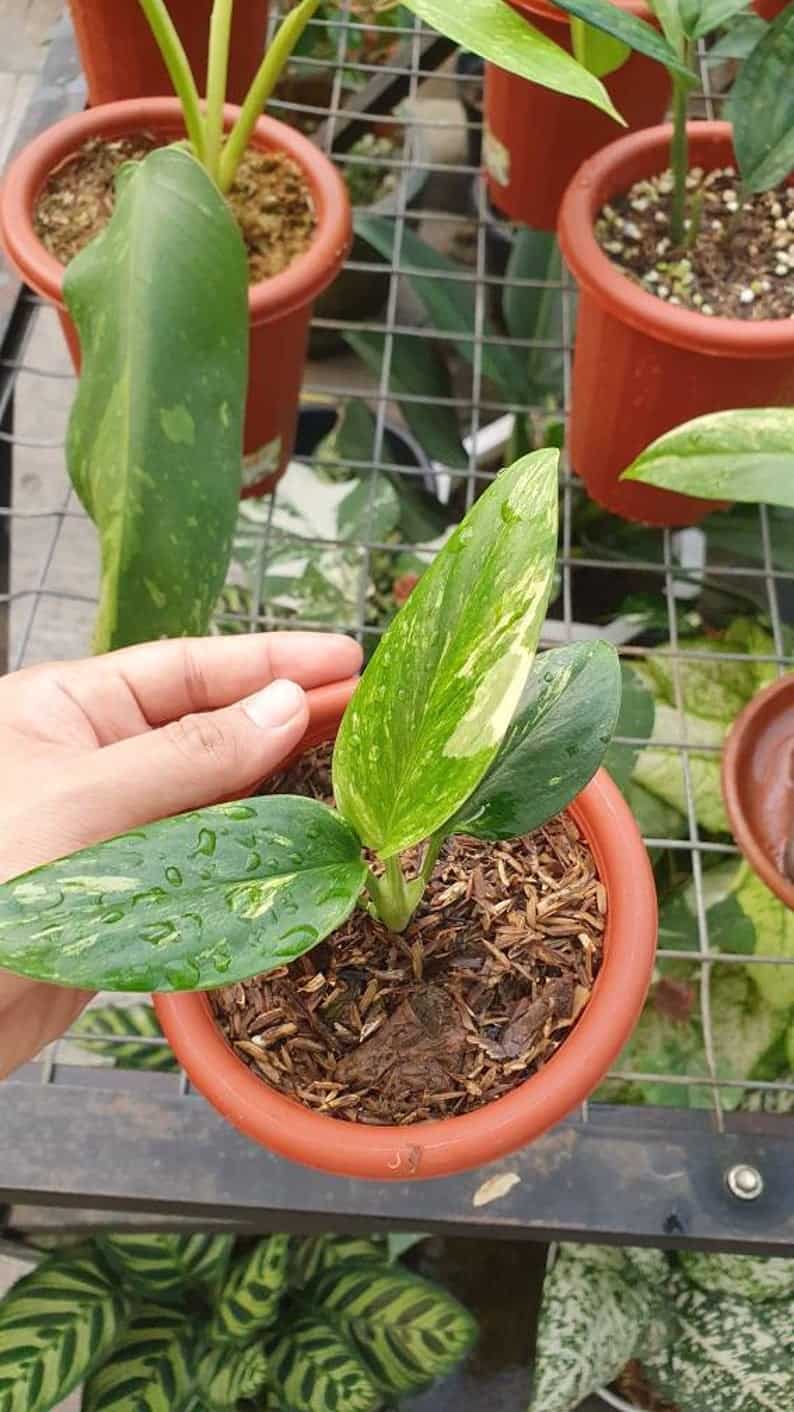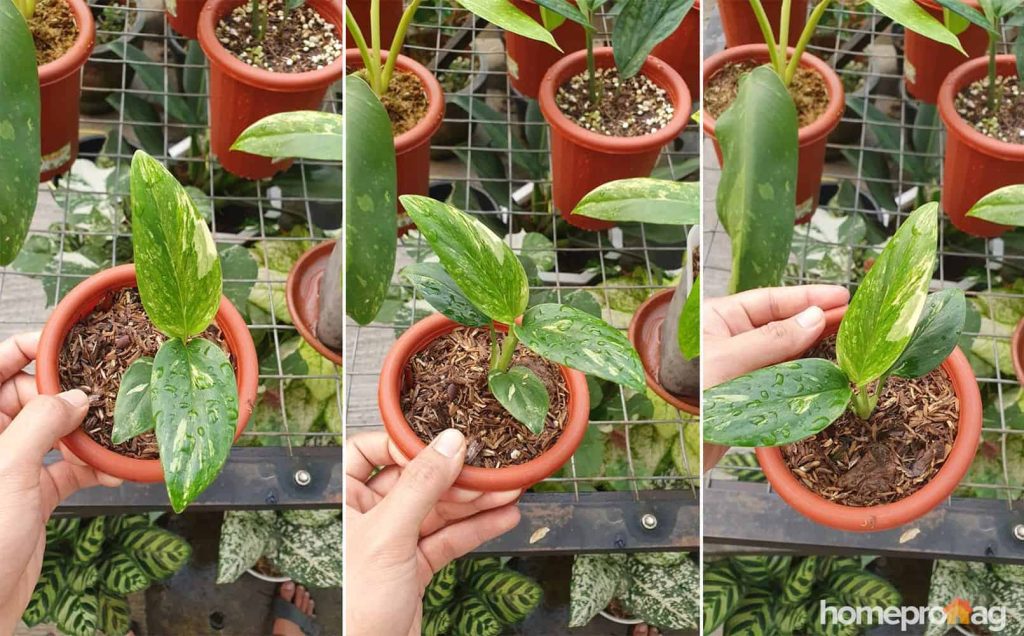The monstera standleyana is a popular indoor plant that is known for its beautiful variegated leaves. The plant is an extraordinary climber that will live happily in a hanging basket. The monstera standleyana is especially loved for its decorative nature, it also has a way of bringing to your space, the tropical vibes.
Monstera standleyana is relatively easy to grow, indoor and outdoor. Many gardeners who are familiar with tropical plants will find it very easy, however, beginner gardeners can also get a hang of it by following the right care guide.
Aside from maintenance, one aspect many gardeners consider when considering a plant to grow is its propagation. Apart from being an easy-to-grow plant, monstera standleyana is also quite easy to propagate, you can have it around this way, for as long as you want.
We are absolutely in love with the monstera standleyana and we know you are too. We have provided below the best care and propagation guide for Monstera standleyana.
Monstera Standleyana Plant Explained
| Botanical name | Monstera Standleyana |
| Light | Bright indirect light |
| Plant type | Tropical plant |
| Soil type | Well-drained |
| Soil pH | 5 to 7.5 |
| Water | Moderate |
| Temperature | 60 to 75 degrees F |
| Native | Costa Rica, Central America |
| Toxicity | Toxic. |
Often confused with the philodendron, the monstera standleyana is a climbing plant that is native to Central America, Costa Rica precisely, it belongs to the Araceae family. The plant is characterized by its variegated leaves of dark green and white, with silvery or cream stripes on them.
It has wide stems, and oval-shaped leaves about 15 cm long. If given the opportunity, the monstera standleyana can grow to a maximum of 19 feet high and 6 feet wide.
Monstera Standleyana Plant Propagation Methods
The joy of most gardeners is to be able to keep their plants living for as long as possible. One of the ways to do this is by propagation. Good thing? Propagating the monstera standleyana is an easy task to perform, you do not require any experience, you only need to follow the best guide, which we have provided below.
Monstera standleyana can be propagated in two ways, via stem cutting, both in water and soil. It can also be propagated via air layering.

Monstera Standleyana Propagation Via Stem Cutting
- Identify and select a healthy and mature plant. Make a cutting of about 8 inches from the stem tip. Ensure the cutting has a minimum of two nodes and aerial nodes.
- Get rid of the leaves at the bottom, and leave the ones at the top.
- Prepare your pot and fill it with quality potting mix, then dip your plant cutting 3 inches into the soil.
- Water the soil regularly and place it in indirect light.
- In about 4 weeks, you will see new growth in your cutting.
Monstera Standleyana Propagation Via Water
- Identify and pick a mature plant, and make a cutting of about 8 inches, like the soil method.
- Get rid of the bottom leaves and retain at least 2 or 3 leaves.
- Fill a jar with water, preferably a clear jar or container. Dip the bottom of your plant into it and place it in direct sun.
- In less than 4 weeks, your plant will develop its rooting system. You can then move your plant into a container of high-quality potting mix.
Monstera Standleyana Propagation Via Air Layering
- Pick a healthy and mature plant and carefully make an incision into the stem, just right below the node.
- Use a moistened sphagnum moss to wrap the incision and then wrap it with a plastic bag. This is to help the moss moist and enhance rooting.
- When you identify the development of the root already, separate the baby plant from its mother and plant it in another pot of its own.
Monstera Standleyana Plant Care
Your plant will grow to its full potential when it is grown with the right care guide. the best care guide for your monstera standleyana is the one that resembles its natural habitat. We want you to get it right, hence we have provided it!
1. Light
In the rainforest, the monstera standleyana was found exposed to shielded, diffused light. We can say that this plant will grow and thrive well in indirect light or partial shade. Exposure to direct light will cause hinder the plant’s growth or cause discoloration to its leaves. It will not also tolerate shade or darkroom. Your plant wants a moderate, bright, indirect light.
2. Water
Contrary to the water need of other tropical plants, the monstera standleyana will appreciate being lightly watered. This is because the plant is sensitive and prone to root rot and other water-causing infections. The best way to water is to allow it to dry completely before watering again. Over-watering your plant will cause root rot and other diseases that will impede your plant’s growth or ultimately kill it.
3. Soil
Due to your plant’s watering need, you need to consider getting a quality potting mix that drains water well. You can get a soil mix that contains sphagnum peat moss. We also recommend mixing your regular potting soil with sand to enable proper drainage.
4. Temperature
The ideal temperature for your monstera standleyana indoor is between 60 degrees F and 75 degrees F. Temperatures below or above can hinder the growth of your plant. Your plant should be taken far from AC vents, cold drafts, and other heating systems vents.

5. Fertilizer
Standleyana will benefit from a little fertilizing, especially during the growing season. You can provide your plant with some diluted fertilizer once in 4 weeks during the spring through fall. This will help enhance the plant’s lush leaves and its overall growth.
6. Potting
For the monstera standleyana, and many other plants, drainage holes are very important. Your purchased pot must have at least two drainage holes, this will help keep your plant from developing water-causing infections.
7. Humidity
Due to its origin, the monstera standleyana will thrive in moderate to high humidity. What happens if you have low humidity indoors? There are ways to increase humidity in the home. One way to do this is by purchasing a humidifier and by placing your plant on a peddle tray.
Monstera Standleyana FAQs
Can I Grow Monstera Standleyana In Water?
Yes, the monstera standleyana can be grown and they can live in water, for as long as you want, however it can be stressful to keep up. You will need to fertilize your plant regularly to keep them alive.
Why Is My Monstera Standleyana Leaves Turning Yellow?
A yellow leaf is an indication that your plant is suffering from overwatering. You should also check the plant’s roots to confirm if there is no root rot or other infections. Let your plant dry completely before watering them again. We will also recommend that you adjust your watering schedule, so the problem doesn’t occur again.
My Monstera Leaves Are Wilting, What Is Wrong?
Wilting standleyana leaves can be caused by either under-watering or overwatering. Check the soil to determine what the problem is. If your soil is wet, wait until it is completely dry before watering again. If it is, however, dry, water it properly.
Why Doesn’t My Monstera Standleyana Leaves Have Holes?
This is dependent on how mature your plant is. If your plant is young, then you should exercise patience with it. However, if it is old, your plant may be stressed.
Is The Monstera Standleyana Toxic?
Yes! monstera standleyana is toxic to not just humans but also pets. Do well to keep it away from your pets and children.
What Colors Do The Variegation Leaves On The Monstera Standleyana Turn?
The variegation on monstera standleyana can turn to either cream, white, or yellow. These colors can either be in form of spots or stripes.
Can I Grow Standleyana Outdoor?
Yes! the monstera standleyana can be grown outdoor, provided they are given the right care. They will do well and grow to their best potential.
Final Thoughts
You and your plant will be happy once your plant is provided the best care, as provided above. Be mindful that there are many things in between that monstera standleyana will not tolerate. Here are additional tips on how to properly ensure you have a healthy plant.
- Cleaning your plant will help your plant maintain healthy growth. Mist and clean its foliage regularly.
- Re-potting is an important way to ensure healthy growth. Standleyana enjoys being placed in a spacious pot, hence when you notice your plant’s root shooting out of the drainage holes, it is time to re-pot. Re-pot in a pot that is one inch bigger than the former.
- Standleyana is susceptible to certain insects i.e., Aphids, and spider mites. You can get rid of these insects and their infections by washing your plant’s leaves with water and insecticidal soap and by trimming off the infected part so it doesn’t spread.
- Your plant can easily get problems from watering. Ensure your watering schedule fits your plant’s needs.
With these care guides, we can assure you of healthy plant growth.
Discover our Swiss Cheese Plant (Monstera Deliciosa) Varieties, Propagation, And Care Guide.

